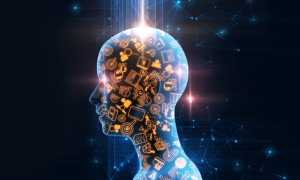Sign up for our free daily newsletter
YOUR PRIVACY - PLEASE READ CAREFULLY DATA PROTECTION STATEMENT
Below we explain how we will communicate with you. We set out how we use your data in our Privacy Policy.
Global City Media, and its associated brands will use the lawful basis of legitimate interests to use
the
contact details you have supplied to contact you regarding our publications, events, training,
reader
research, and other relevant information. We will always give you the option to opt out of our
marketing.
By clicking submit, you confirm that you understand and accept the Terms & Conditions and Privacy Policy
The US Copyright Office has refused for a second time to register artwork created jointly by an artist and an artificial intelligence (AI) painting app called Raghav.
The review board of the office considered the arguments made in the first and second requests and found that the work, called Suryast, did not contain “sufficient human authorship” necessary to sustain a claim of copyright.
Ankit Sahni created a Van Gogh-inspired 2D artwork on which he had listed himself and Raghav AI painting app as the two authors of the artwork, when initially applying for copyright in 2021. He generated the work by taking an original photograph that he authored, inputting that photograph into Raghav, then inputting a copy of Vincent van Gogh’s ‘The Starry Night’ into Raghav.
He was identified as the sole copyright claimant.
In June 2022, the Copyright Office refused to register the work because it “lack[ed] the human authorship necessary to support a copyright claim”.
Responding to Sahni’s assertion that the work included some human creative input, the office explained that “this human authorship cannot be distinguished or separated from the final work produced by the computer program”.
He asked the office to reconsider but the office refused again in September 2022, saying that it was a “classic example” of derivative work because it was a digital adaptation of a photograph and does not contain enough original human authorship to support a registration.
In July 2023, Sahni asked the office to reconsider its refusal to register for a second time, he argued a number of points such as Raghav serving merely as an “assistive software tool”, subject to creative decisions by Sahni in selecting his original photo, The Starry Night image as the style input, and setting the variable value for the amount of style transfer.
The board once again concluded that the work was not the product of human authorship. Specifically, it found that the “expressive elements” of pictorial authorship were not provided by Sahni in that he provided three inputs to Raghav: a base image, a style image, and a “variable value determining the amount of style transfer”.
Because he only provided these three inputs to Raghav, the Raghav app, not Sahni, was responsible for determining how to interpolate the base and style images in accordance with the style transfer value, the board concluded.
It said he was welcome to apply to register his photograph, assuming it meets all statutory requirements, but he cannot register the AI-modified version before the board.
The copyright framework has struggled to keep pace with the rapid advancements in AI. Open AI, the creators of generative AI chatbot ChatGPT, and other companies like Meta have been hit by a spate of lawsuits this year accusing them of using copyrightable material to train their AI systems.
In August, the US Copyright Office launched an inquiry into ownership and legal rights of generative AI, with comments due in October and November.
Email your news and story ideas to: [email protected]










